- Home
- Michael Duffy
Sydney Noir
Sydney Noir Read online
SYDNEY NOIR
MICHAEL DUFFY has worked for the Sydney Morning Herald and the Sun-Herald as a reporter of crime and other urban issues. He is the author of crime books – novels and non-fiction – including Call Me Cruel, The Simple Death and Drive By.
NICK HORDERN is a former senior writer at the Australian Finanical Review who has also worked as a political staffer, diplomat and intelligence analyst.
SYDNEY NOIR
THE GOLDEN YEARS
MICHAEL DUFFY and NICK HORDERN
A NewSouth book
Published by
NewSouth Publishing
University of New South Wales Press Ltd
University of New South Wales
Sydney NSW 2052
AUSTRALIA
newsouthpublishing.com
© Michael Duffy and Nick Hordern 2017
First published 2017
10 9 8 7 6 5 4 3 2 1
This book is copyright. Apart from any fair dealing for the purpose of private study, research, criticism or review, as permitted under the Copyright Act, no part of this book may be reproduced by any process without written permission. Inquiries should be addressed to the publisher.
National Library of Australia
Cataloguing-in-Publication entry
Creator: Duffy, Michael, 1957– author.
Title: Sydney Noir: The golden years / Michael Duffy and Nick Hordern.
ISBN: 9781742235448 (paperback)
9781742242729 (ebook)
9781742248202 (ePDF)
Subjects: Crime – New South Wales – Sydney.
Corruption – New South Wales – Sydney.
Organised crime – New South Wales – Sydney.
Other Creators/Contributors: Hordern, Nick, author.
Design Avril Makula
Cover design Nada Backovic
Cover image William Street, Kings Cross, 1970. National Archives of Australia, A1200, L84006.
Printer Griffin Press
All reasonable efforts were taken to obtain permission to use copyright material reproduced in this book, but in some cases copyright could not be traced. The author welcomes information in this regard.
This book is printed on paper using fibre supplied from plantation or sustainably managed forests.
Contents
Introduction
1966 • How Sydney Worked
1967 • When Shirley Met Freddie
1968 • The End of The Lanes
1969 • The Venus of The Reef
1970 • Raking It In
1971 • Reading Paddy’s Book
1972 • An End and a Beginning
An Open Question: Was Robert Askin corrupt?
Notes
Sources
Bibliography
Acknowledgments
Index
‘Do you know who was in the joke, and who was not?’
– Detective-Sergeant Brian ‘The Cardinal’ Doyle to Shirley Brifman.
‘Only fragments of what occurred were revealed.
The matter was stumbled upon by accident.
Beyond the fragments there was silence.’
– Moffitt Royal Commission, referring to one of its few discoveries of corrupt police behaviour.
INTRODUCTION
The Golden Years of the Sydney underworld ended on 2 September 1972, when the body of a young man named Jan O’Truba was found off the Wakehurst Parkway behind the Northern Beaches. He had been tied to a tree, tortured, and shot three times in the head. O’Truba had been ‘interviewed with a sharp knife’1 and the bru-tality of his death shocked the city. But it was notable for another reason: O’Truba was a heroin dealer, albeit on a small scale, and his was the first in the parade of death that has led to the modern Sydney drug trade.
This is a history of the Sydney underworld in the years just before the drugs came, from 1966 to 1972. There is an irony in describing these as ‘the Golden Years’, but given what was to follow, that is what they were. We take 1966 as the beginning of our story because it was the year Inspector Ray Kelly, the dominant corrupt policeman of the post-war period, retired. We can’t understand the Golden Years without understanding the police culture he exemplified, which was based on prohibition.
All underworlds are shaped by the most lucrative crimes of the day, which are determined by prohibition. In effect, society decides what behaviour it wants to outlaw, and those laws create the crime and the criminals. In the New South Wales of the Golden Years, the major illegal activity was the very popular SP (‘starting price’ or off-course) betting on horses.
The SP and the other forms of pervasive illegality created the world we call Sydney Noir. At one end of this broad spectrum were the professional law-breakers who took SP bets, ran baccarat games and casinos, staffed the bars that sold alcohol out of hours, stole the new portable electrical goods, offered their bodies to strangers on the streets – or violently extorted money from those who did so. At the other were the customers, the ordinary punters who had a hot racing tip, the European migrant with a slim chance of finding a sexual partner in largely Anglo-Celtic Sydney, or just someone who wanted a drink after 10pm. All were breaking the law, but many did not see it like that.
A 1963 Royal Commission into the SP concluded that most citizens of New South Wales, even those who did not bet themselves, tolerated illegal betting on horses and were disinclined to assist the police in any efforts to close it down.2 The inquiry also found that those efforts were not too strenuous, and if anyone was unlucky enough to be arrested, magistrates were uninterested in imposing heavy penalties. There was a certain amount of low level corruption in all this, with SP bookies paying police, but it was tolerated because almost no one really thought betting on horses away from a racetrack was wrong.
One of the authors of this book has a relative we will call Liz, who in the 1940s was a young teenager. On the weekends she would make pocket money by taking bets from some of the people who lived in her block of flats and run them down to the SP bookie out the back of the Coogee Bay Hotel. The interesting point about this is that Liz’s family were middle-class, church-going Anglicans who would not have considered doing anything ‘really’ immoral or criminal. Clearly, the SP existed in another category, for them and many others.
The 1963 inquiry estimated there were some 6000 illegal SP bookies in the state,3 in every large workplace and in every city hotel. Royal Commissioner Justice Edward Kinsella concluded ‘I think it is highly probable that there is no place in the state – city, town or village – with 250 or more inhabitants in which there is not a starting price bookmaker operating.’ A survey he commissioned of the metropolitan population found that 28.7 per cent of adults bet illegally.
So the SP was an industry, and the service it provided was so popular that you were unlikely to be promoted as a policeman or a politician if you made too much of a fuss. The evidence suggests most police leaders and politicians were not corrupt, but they tolerated the SP and the corruption that came with it because they had to.
The long-running tolerance of the SP created a widespread ambivalence towards the law, which had the effect of protecting other illegal activities, such as prostitution, even though they had far less social acceptance. Many who bet on the horses would have regarded abortion with abhorrence, and seen no equivalence at all between the two. But with corruption so widely accepted in one area, it was impossible to stop it spreading to others.
An underworld based on such popular support is difficult for us to grasp today, because of two great changes that occurred in the 1970s. The first was the legalisation of much hitherto prohibited behaviour – chiefly the replacement of the SP by the state-owned shopfront betting agencies known as TABs (they were run by the Totalizer Agency Board). Th
e first TABs opened in 1964, but their spread was fairly slow, and they only began to affect SP bookies substantially in the 1970s. Other illegal activities such as abortion and pornography were decriminalised in the 1970s, destroying the rackets that had depended on their proscription. Gradually prostitution too was decriminalised.
The other great change was the replacement of illegal gambling by the drug trade as the main source of criminal revenue. This altered everything because, compared with illegal betting, the drug trade’s client base was much smaller and far more people died as a result of it. This produced a dramatic reduction in the popular support for organised criminals, no longer typified by ‘colourful characters’ and ‘well-known racing identities’, but by murderous gangsters peddling a product that killed sons and daughters. By the late 1970s, the public leaders who for decades had happily coexisted with the underworld began to describe it as evil and launched a war on drugs. This is why the death of Jan O’Truba marked such a turning point.
The police investigation into O’Truba’s murder was a comprehensive one: in the year after his death they interviewed a total of 2800 people, issuing a $10 000 reward for information about the killers.4 The offer of reward was signed by the Premier of New South Wales, Robert William Askin, whose own death in September 1981 helped define how the Golden Years have been interpreted.
Or misinterpreted.
Just four days after Askin died, the National Times weekly newspaper ran a story by young reporter David Hickie on its front page headed ‘Askin: Friend to Organised Crime’. It claimed that the former premier had received $100 000 a year in bribes from criminals from 1968 to 1975, as had Fred Hanson, who was assistant and deputy police commissioner before taking the top job in 1972. Hickie said the man Hanson replaced, Norm Allan, was also corrupt, and on Askin’s watch, ‘organised crime became institutionalised on a large scale in New South Wales for the first time’.5 Askin had close links to Perce Galea, illegal casino owner. Another illegal casino owner was Joe Taylor. Premier Askin, wrote Hickie, was ‘not so much a politician receiving payoffs as intimately involved in the Galea/ Taylor operations, one of those “running the show”.’
One of the challenges in ascertaining the truth about the Golden Years is that much of what we think we know about the period turns out to be unprovable. Hickie mentioned three sources for his explosive claims but named none of them. What normally happens in a case like this is that the information is later firmed up, as solid evidence is produced, and some sort of official investigation occurs. None of that happened in Askin’s case. Yet today, thirty-six years later, his guilt is still taken as given, shaping our view of the Golden Years.
We shall argue that while it might have made sense in the 1980s to believe a premier had been paid what was over a million dollars a year (in today’s terms) by criminals, it makes less sense now. After all this time, the conclusive evidence is still not there. Before making that argument we need to tell Askin’s story. The case against him remains largely circumstantial, and it is our argument that those circumstances, at least in retrospect, point to other explanations.
The Golden Years occurred at the peak of the post-war economic boom. Between 1966 and 1972, disposable income doubled, while prices increased by only one third.6 There was more money than ever to gamble, and more goods to steal,7 all in a climate of changing morality. The so-called affluent or consumer society was increasingly sectarian, with significant declines since the 1940s in the belief in God and church attendance.8
Crime had started to boom before Askin came to office. From 1963, rates of burglary, larceny, armed robbery, and robbery with assault showed sharp annual increases.9 A major reason was the baby boomers – the surge in the number of 18–24-year-old males, the most crime-prone group in society.10 The increase in the advertising of consumer products ensured that many were aware of just what they were missing out on.
Askin was unlucky to be premier during a boom not just in crime but in media interest in corruption. New media outlets such as This Day Tonight (launched 1967) and the National Times (1971) catered for a better educated middle class intrigued by the subject, especially after the release of the novel and film The Godfather (1969 and 1972), which popularised the concept of organised crime. The Sydney media became understandably fascinated by the illegal casinos the government would not close. But it was the level of interest rather than illegal gambling joints that were new. They had been there before Askin, and would be there long after he had gone.
We will consider other myths about the Golden Years. The most important is the overestimation of the impact of the American troops in Sydney on R&R (rest and recreation) leave from the Vietnam War, in particular the claim they fostered the heroin epidemic of the 1970s. In fact, this started well after they had left, and was caused by a range of factors, including the demand created by young Australians who encountered heroin in Asia on their return trips from Britain. Travel was expanding the Australian consciousness in many ways: Geoffrey Blainey’s The Tyranny of Distance was published in 1966, just as more affordable air travel began to undercut its theme. Overseas air flights increased more than three-fold over the next six years.11
It was a very different world to our own in so many ways, still a time of two postal deliveries a day, of degrees Fahrenheit, of miles and yards, pints and ounces, and pounds, shillings and pence – although not for much longer. Australian culture was markedly blue collar and sports-oriented. There was change. An older, superficially decorous Australia was being replaced by one characterised by youthful brashness on the one hand, gentrification on the other. Yet people still admired authority and kept secrets to an extent difficult for us to imagine. They drank beer – copious amounts of beer – but not much wine. Much of their food we would find inedible.
Anything to do with sex was incredibly exciting and often illegal. Much ‘vice’ occurred around Kings Cross, which lived by a different set of rules to the suburbs. On the whole, people were happy with this arrangement, although it, like much else, was breaking down during the Golden Years.
Indoors, the prevailing odour was stale cigarettes, out on the streets it was unleaded petrol. Wearing seatbelts became compulsory only in 1971, and getting sunburnt was proof you were having a good time. Life expectancy was a full decade less than it is now.
In Sydney Noir it was even lower.
HOW SYDNEY WORKED
THE JOKE
They hanged Ronald Ryan in Pentridge Prison at 8am on 3 February 1967. He was the last man executed in Australia, and 3 000 people gathered outside the gaol to protest. That was in Melbourne, but its instigating event, Ryan’s capture a year earlier, had occurred in Sydney. It crowned the career of the city’s most famous cop, Ray Kelly.
Many people know this. Not so many know that Kelly was helped by another king of the city, Lennie McPherson, one of Sydney’s most powerful criminals. Their cooperation is an example of how crime was organised for many decades by the most successful and longest-running public-private partnership in the history of the state of New South Wales, that between criminals and corrupt police. It was an arrangement known to those involved as ‘the joke’, a very Sydney term for so dubious an arrangement. It is the sort of joke that is not funny at all.
Ryan and another inmate, Peter Walker, had escaped from Pentridge on 19 December 1965. Ryan killed a prison officer on the way out. Realising they needed haven in a country with no extradition treaty with Australia, they fled to Sydney and asked McPherson for help to get to Brazil. Then they rented a flat in Mount Street, Coogee, and waited. The Victorian police thought they were still in Melbourne and offered a reward of £5000 for information.
McPherson was big, violent and smart. He was also Ray Kelly’s main informant, and for years had swapped information for a green light to stand over other criminals. He figured that if he helped Ryan and was found out, that would mean the end of his protection by police. Kelly had covered up for him before, including a couple of murders of other criminals,
but the killing of a prison officer was a different matter. Also in account was that Ryan was intending to commit a string of armed bank robberies to raise the money for the false passports: more innocent people might die. As McPherson would later remark, bodies in the street were bad for business.
So McPherson told Kelly where he might catch Ryan, and an operation involving fifty cops was launched. The escapees were lured to Concord Repatriation Hospital on the evening of 6 January 1966, on the promise of meeting two women. The police pounced and the heavily armed men – who’d sworn to shoot it out if sur-rounded – were captured without any gunfire.
Kelly gave the honour of capturing Walker to Detective Sergeant Fred Krahe, one of the toughest and most experienced officers in the Criminal Investigation Bureau (CIB). When the time came, Krahe thrust a shotgun through the window of the car and yelled at Walker, ‘Put your hands up or I’ll blow your fucking head off!’1
Like many people at the time, Ryan and Walker didn’t realise just how Sydney worked. They were not in on the joke.
THE APOTHEOSIS OF RAY KELLY
Two weeks after Ronald Ryan’s capture, in February 1966, Ray Kelly left the police force: he had reached the compulsory retirement age of sixty. But it is worth reflecting on his career, because he was considered Sydney’s most powerful corrupt policeman, and his protégés became major figures in their own right. Some writers have claimed he continued to be a major force in Sydney’s corruption for many years after his retirement.
Seven hundred men attended his retirement bash. He was leaving at his peak, having been commended for the capture of Ryan and Walker. The police service record card used at the time had a box for ‘Endorsement on discharge’ and the comment on Kelly’s record reads: ‘Outstandingly good’.

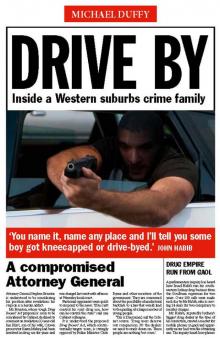 Drive By
Drive By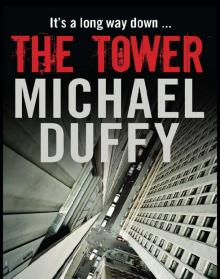 The Tower
The Tower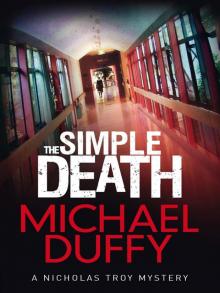 The Simple Death
The Simple Death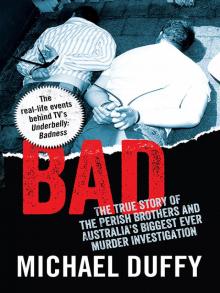 Bad
Bad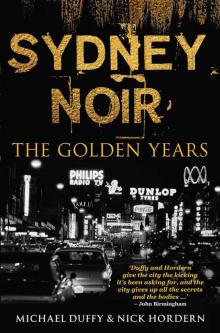 Sydney Noir
Sydney Noir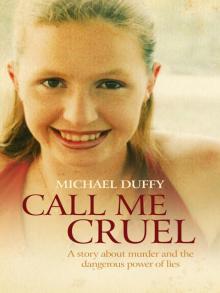 Call Me Cruel
Call Me Cruel